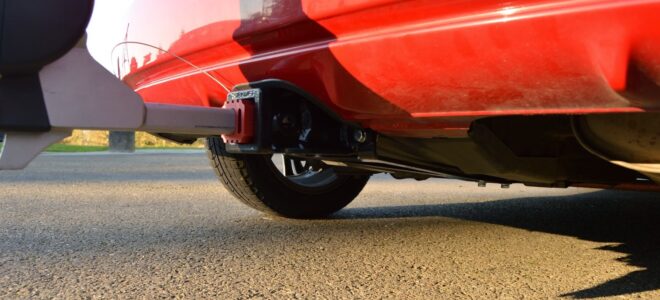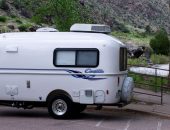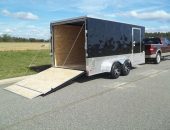Choosing the correct towing setup is more than checking the weight rating. Many vehicle owners assume that all towing devices will fit every car or truck. That assumption leads to frustration, wasted money, and in some cases, unsafe towing. Matching the equipment to your specific vehicle is essential.
If you’ve ever excitedly unboxed a new trailer hitch only to find that it doesn’t fit your vehicle, you’re not alone. Many vehicle owners run into compatibility issues when trying to install a trailer hitch. Understanding the reasons behind this mismatch can save you time, money, and frustration. In this blog, we’ll explore the most common reasons your tow bar might not fit and how to ensure you get the right one next time.
1. Wrong Hitch Class
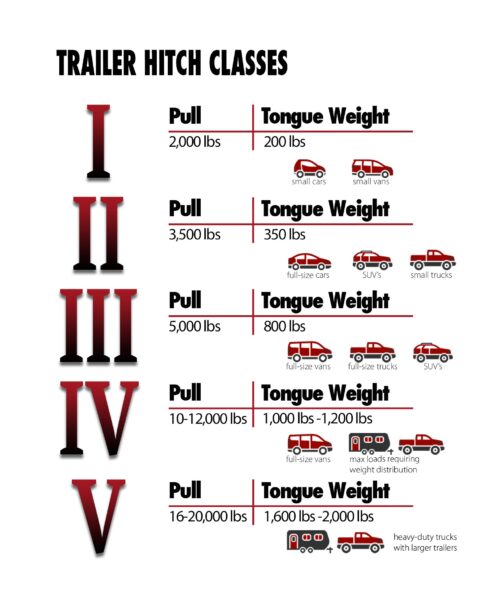
Source: torklift.com
Trailer hitches come in different classes, ranging from Class I to Class V, each designed for a specific range of towing capacity and vehicle type.
- Class I: Light-duty, up to 2,000 lbs. Typically for small cars and sedans.
- Class II: Medium-duty, up to 3,500 lbs. Fits crossovers, minivans.
- Class III: Standard-duty, up to 6,000 lbs. For trucks, SUVs.
- Class IV: Heavy-duty, up to 10,000 lbs. For full-size trucks and SUVs.
- Class V: Extra-heavy-duty, up to 20,000 lbs. For commercial or large trailers.
If you’ve accidentally purchased a hitch that is too large or small for your vehicle’s towing rating, it simply won’t fit properly—or worse, it could pose a safety hazard if forced.
2. Vehicle-Specific Fitment
Not all hitches are “one-size-fits-all.” In fact, most are custom-engineered for specific vehicle makes, models, and even model years. The mounting points, frame width, and undercarriage design can vary greatly between vehicles—even between different trims of the same model.
Example: A 2020 Ford Explorer might require a different tow bar than the 2023 model due to frame or bumper design changes.
Tip: Always double-check the product description or consult a fitment guide on the manufacturer’s website to ensure compatibility with your exact vehicle.
3. Incorrect Installation Method
Sometimes the hitch can fit your vehicle, but incorrect installation is the problem. Common issues include:
- Bolting it to the wrong mounting points.
- Misaligning the holes.
- Not removing factory components (like underbody panels or bumper brackets) when necessary.
Always follow the installation instructions to the letter. Most manufacturers provide step-by-step guides or even video tutorials to assist with proper installation.
4. Obstructions or Modifications
Your vehicle might have aftermarket modifications or factory-installed parts that interfere with installation. These include:
- Rear-mounted spare tires.
- Custom bumpers.
- Running boards or side steps.
- Rear sensors or cameras.
In these cases, a standard hitch might not clear the obstruction, or you may need a special bracket or adapter.
5. Using a Universal Hitch
“Universal” hitches often sound appealing due to their flexible application, but they frequently fall short in real-world fitment. While these hitches are designed to fit a wide range of vehicles, they rarely match the precision of a custom-fit tow bar. This could result in misalignment, poor towing performance, or even frame damage.
If you bought a universal hitch and it’s not fitting well, consider switching to a vehicle-specific instead.
6. Rust or Damage to Mounting Points
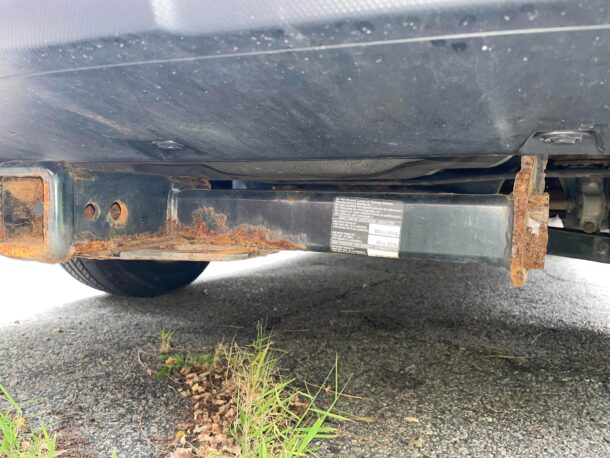
Source: reddit.com
On older vehicles, the frame where the hitch is supposed to mount might be compromised by rust, dents, or previous damage. This can prevent the tow bar from seating properly or lining up with the bolt holes.
What to do: Inspect the underside of your vehicle before purchasing a hitch. If you notice excessive rust or deformation, consult a mechanic to determine if repairs are necessary before installation.
7. Wrong Hardware or Missing Parts
Sometimes the issue is not the hitch itself, but the hardware included with it. If bolts, nuts, or brackets are missing or incompatible, the hitch might not mount correctly.
When buying used or aftermarket hitches, always verify that all required components are included, and if in doubt, contact the manufacturer for a replacement parts kit.
8. Differences in International Models
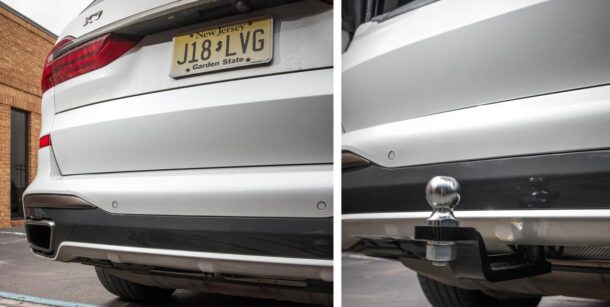
Source: caranddriver.com
If your vehicle is an imported model or you’re ordering from an international seller, be cautious. The same model may have different undercarriage configurations depending on the country it was made for.
Solution: Confirm that the tow bar you’re purchasing is designed specifically for your vehicle’s market and VIN (Vehicle Identification Number).
How to Avoid Hitch Fitment Issues
To ensure your trailer hitch fits perfectly:
- Use a Fitment Guide: Most major brands (like CURT, Reese, Draw-Tite) have online tools where you input your vehicle’s year, make, and model to find the right one.
- Consult with a Professional: A local trailer or auto shop can often recommend and even install the right hitch for your vehicle.
- Read Reviews and Product Q&A: Other buyers often leave insights into how well it fits their specific vehicle.
- Double-Check Towing Capacity: Never exceed your vehicle’s towing limit, even if the hitch is rated for more.
Check Rear Clearance Before You Buy
It’s easy to overlook rear clearance when selecting a hitch, especially if your vehicle has features like a rear-mounted spare tire or tailgate-mounted bike rack. Some hitches extend out farther than others and can interfere with those accessories. Others may not allow room for a bike rack or cargo carrier.
Always take measurements from the rear bumper to the furthest protruding feature on your vehicle. Match that measurement with its specs. If unsure, talk to a professional who has experience with your exact vehicle model.
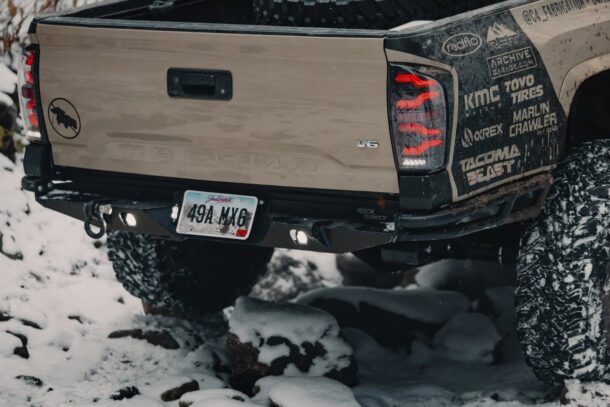
Source: kraveautomotive.ca
Know the Bumper and Frame Style
Some vehicles feature uni-body frames with limited mounting options. Others have hidden bumpers that require extensive trimming to accommodate a hitch.
Trucks with step bumpers might offer multiple mounting styles, but some SUV models limit how deep the hitch can sit without cutting plastic. Know what your vehicle allows. Read vehicle forums. Call the dealership. Watch model-specific installation videos to avoid last-minute surprises.
When to Choose a Professional Installation
If you’re unsure about tools, don’t have access to a lift, or your vehicle requires removal of panels, sensors, or exhaust components, consider hiring a professional. Mistakes can lead to bent mounting points, misaligned hitches, or even exhaust damage.
A qualified mechanic or trailer shop has the equipment to lift your vehicle safely and the knowledge to handle model-specific quirks. It might cost more upfront, but it often prevents far more expensive problems later.
Hidden Hitch Designs and Compatibility
Hidden hitches are designed to stay out of sight when not in use. They tuck under the bumper and sometimes require a special panel to stay flush with the vehicle’s body. While sleek, they come with compatibility issues.
Some hidden hitches only accept proprietary accessories. Others have smaller openings or different pin configurations. If your towing gear doesn’t align with that hitch’s specs, you’ll need adapters—or worse, you’ll have to replace the hitch.
Double-check if your accessory gear, bike racks, or ball mounts will work with a hidden design before you commit.
Conclusion
A trailer hitch that doesn’t fit your vehicle is more than just an inconvenience—it can be a safety risk and a waste of money. Whether it’s due to mismatched classes, incorrect fitment, or installation errors, there are many reasons your hitch might not be working as expected.
The good news? With a little research and attention to detail, finding the perfect hitch for your vehicle is completely doable. Always choose a hitch made specifically for your vehicle, and when in doubt, seek help from a trusted auto parts expert or professional installer.

